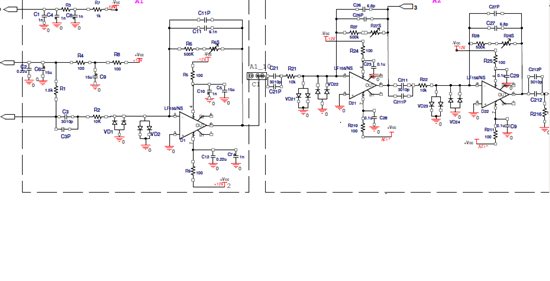dears all,
i am designing the photodiode amplifier but it is showing some oscillations . interestingly in the second stage if i reduce feedback resistor to 200k it there are no oscillations , why so ??. please suggest me correct way to find the feedback capacitor . please explain me about this circuit. Photo diode is reverse biased & output terminals are shown in circuit

